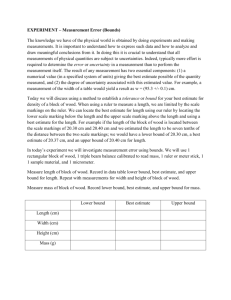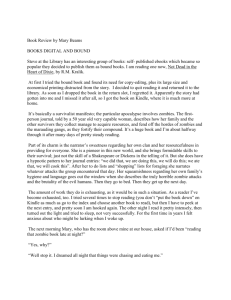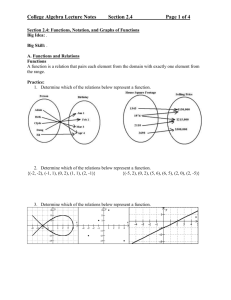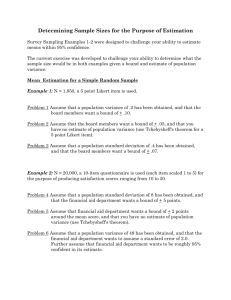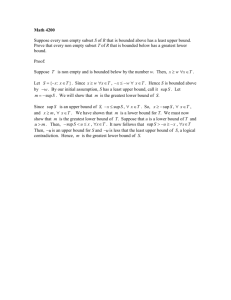EXPERIMENT – Measurement Error (Bounds) The knowledge we
advertisement
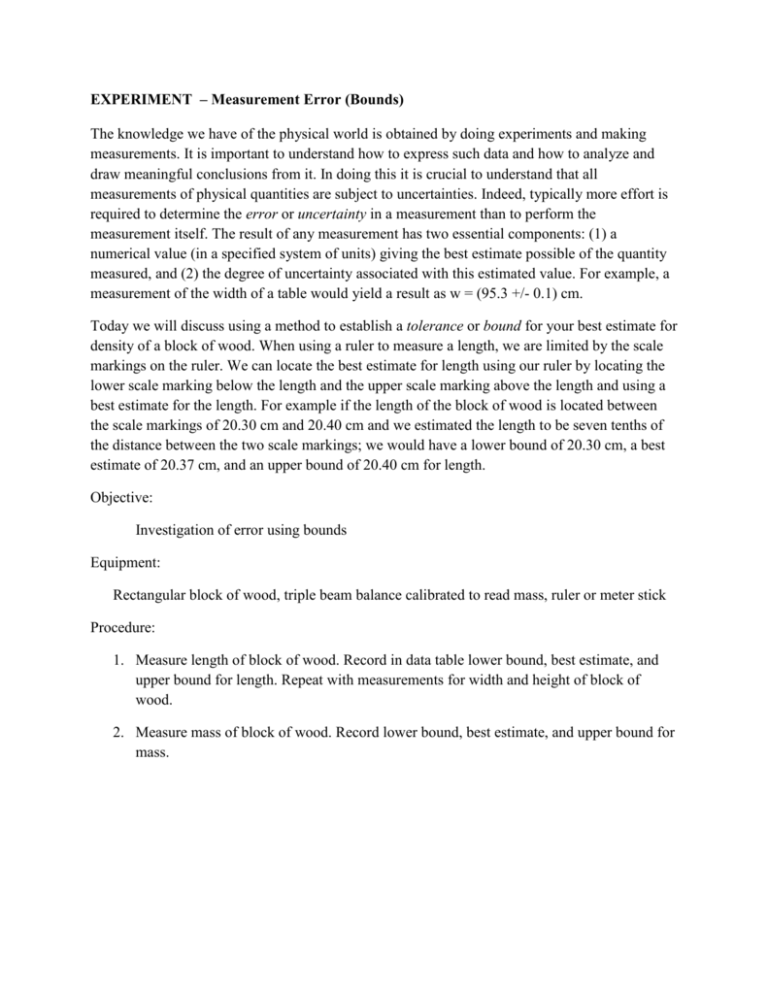
EXPERIMENT – Measurement Error (Bounds) The knowledge we have of the physical world is obtained by doing experiments and making measurements. It is important to understand how to express such data and how to analyze and draw meaningful conclusions from it. In doing this it is crucial to understand that all measurements of physical quantities are subject to uncertainties. Indeed, typically more effort is required to determine the error or uncertainty in a measurement than to perform the measurement itself. The result of any measurement has two essential components: (1) a numerical value (in a specified system of units) giving the best estimate possible of the quantity measured, and (2) the degree of uncertainty associated with this estimated value. For example, a measurement of the width of a table would yield a result as w = (95.3 +/- 0.1) cm. Today we will discuss using a method to establish a tolerance or bound for your best estimate for density of a block of wood. When using a ruler to measure a length, we are limited by the scale markings on the ruler. We can locate the best estimate for length using our ruler by locating the lower scale marking below the length and the upper scale marking above the length and using a best estimate for the length. For example if the length of the block of wood is located between the scale markings of 20.30 cm and 20.40 cm and we estimated the length to be seven tenths of the distance between the two scale markings; we would have a lower bound of 20.30 cm, a best estimate of 20.37 cm, and an upper bound of 20.40 cm for length. Objective: Investigation of error using bounds Equipment: Rectangular block of wood, triple beam balance calibrated to read mass, ruler or meter stick Procedure: 1. Measure length of block of wood. Record in data table lower bound, best estimate, and upper bound for length. Repeat with measurements for width and height of block of wood. 2. Measure mass of block of wood. Record lower bound, best estimate, and upper bound for mass. Data Table Lower bound Best estimate Upper bound Best estimate Upper bound Length (cm) Width (cm) Height (cm) Mass (g) Calculations Convert the measurements to SI units. Lower bound Length (m) Width (m) Height (m) Mass (Kg) Density for a block of wood is calculated by dividing the mass of the block of wood by the volume of the block, where volume is the product of the block’s length, width, and height. = 𝑚 𝑚 = 𝑉 𝑙𝑤ℎ To calculate density best estimate for the block of wood, use the values for best estimates for mass, length, width, and height in SI units. 𝐵𝐸 = 𝑚𝐵𝐸 𝑉𝐵𝐸 =𝑙 𝑚𝐵𝐸 𝐵𝐸 𝑤𝐵𝐸 ℎ𝐵𝐸 =( ( )( ) )( ) = Use original data to determine significant figures and report final result. 𝐵𝐸 = To calculate density upper bound for the block of wood, use the upper bound for mass and the lower bounds for length, width, and height in SI units so as to make the fraction for density upper bound as large as possible.. 𝑈𝐵 = ( )( 𝑚𝑈𝐵 𝑚𝑈𝐵 = = 𝑉𝐿𝐵 𝑙𝐿𝐵 𝑤𝐿𝐵 ℎ𝐿𝐵 ( ) )( ) = Use original data to determine significant figures and report final result. 𝑈𝐵 = To calculate density lower bound for the block of wood, use the lower bound for mass and the upper bounds for length, width, and height in SI units so as to make the fraction for density as large as possible.. 𝐿𝐵 = ( )( 𝑚𝐿𝐵 𝑚𝐿𝐵 = = 𝑉𝑈𝐵 𝑙𝑈𝐵 𝑤𝑈𝐵 ℎ𝑈𝐵 ( ) )( ) = Use original data to determine significant figures and report final result 𝐿𝐵 = We can then report that density best estimate 𝐵𝐸 is trapped between density lower bound 𝐿𝐵 and density upper bound 𝑈𝐵 . (𝐿𝐵 < 𝐵𝐸 < 𝑈𝐵 ) We can calculate the error between the density best estimate and the density upper bound as 𝑑1 = 𝑈𝐵 − 𝐵𝐸 and the error between the density best estimate and the density lower bound as 𝑑2 = 𝐵𝐸 − 𝐿𝐵 . 𝑑1 = 𝑑2 = We can then report the density of our block of wood as = 𝐵𝐸 ∓ 𝑑, where d is the larger of d1 or d2. = We are then assured that our density best estimate is uncertain by no more than our error d.
